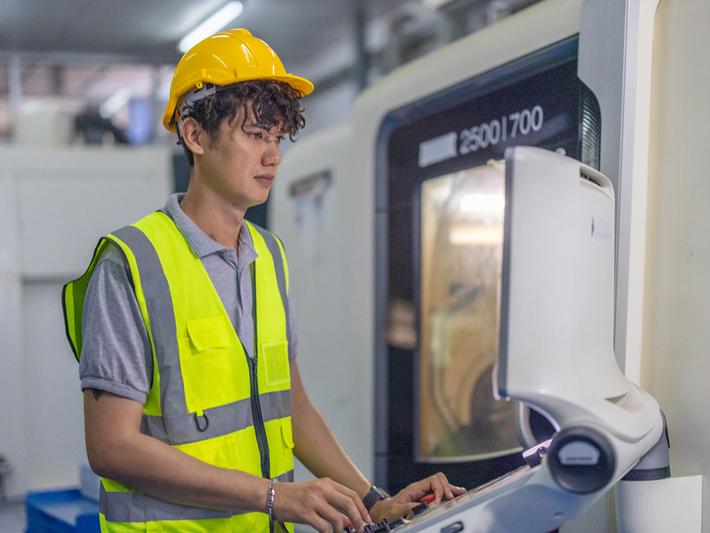Predicting where and when vegetation might cause problems on a railway line has long been a headache for the people charged with keeping trains running on time. In-person surveying techniques disrupt services and are both labour-intensive for rail operators and prone to human error.
Developing a university-industry partnership to create a new system based on drone imaging and remote sensing, with the data fed to artificial intelligence to identify potential concerns near the line, seemed to offer a way to solve this decades-old problem.
So, the University of Essex linked up with Railscape and agreed on a vision. But bridging the gap between lab-based research and live railway environments turned out to be more difficult.
For a start, the academic team at Essex needed consistent data. And if they learned one thing – and very quickly – it’s that nothing is more inconsistent than nature.
Field conditions are unpredictable; weather, vegetation cycles and safety constraints all add complexity. Academic research can tend to assume ideal datasets, while in the field, images can be messy, inconsistent and highly variable.
Thinking outside the box
This posed problems for our academic team as vegetation images were often complex, and plants can be very similar. An absence of publicly available datasets for certain specialist species also meant that the initial accuracy of our models was limited.
It was a classic theory-meets-practice challenge, and perhaps there is always a learning curve to understand how they can fit together to create a workable solution.
- Spotlight guide: advice from academics and institutions shortlisted in the THE Awards 2025
- The power of partnerships in preventing regional talent drain
- How to choose the right industry partners
For us, the answer lay in tapping into the expertise of people outside our own field and embracing new ways of looking at the problem.
The research team collaborated with botanists and field workers, combining their expertise with our technical approach to refine and expand the dataset. Through this process, we improved the accuracy of data labelling and strengthened the information from sensors and images.
We had to extend field testing, refine our machine-learning models, and ensure we were maintaining close communication between the Railscape team, research associate and the academic supervisors.
Getting reliable outputs required a lot of extra data collection, cleaning and retraining of models. But this also highlighted the strong foundation of academic theory, which was then refined with practice until it worked in operational settings.
We adapted timelines and processes, so the final system was not just technically sound but also robust in all conditions.
As a result of the changes and the team’s flexibility, the performance of the survey system improved significantly.
We have programmed the AI to identify ash dieback, trees that deposit leaves on the line and on the railway, and trees that are stressed, diseased, dead or dying. It can even identify “strikers”, trees that could cause life-threatening injury and a lot of damage if they fell on to the railway.
While the immediate benefits of this new system to rail operators and commuters alike are obvious, the knowledge transfer partnership will also have long-term benefits for Railscape, with profits forecast to triple across three years.
Overcoming uncertainty
On reflection, applying Essex research to the challenge of vegetation monitoring was both rewarding and complex.
At the outset, working with Railscape was an exciting opportunity for Essex researchers to lend academic expertise to an everyday context, tempered with uncertainties around aligning research approaches with industry priorities. As the project progressed, though, stronger collaboration developed, with both sides gaining a deeper understanding of each other’s needs and strengths.
These feelings were shared on both sides of the partnership and highlight the importance of creating a reciprocal relationship that not only allows you to deliver on your objectives but also lays the foundation for continued innovation and long-term impact in the field.
For Railscape, it was their first time working so closely with an academic partner. As the project progressed, their initial curiosity and caution grew into real confidence. By the end, it felt like a true partnership, with a shared vision.
The key is collaboration and openness. Both sides need to understand and respect each other’s priorities. For Railscape, that meant explaining industry constraints clearly, while also being open to new ways of thinking from academia. Regular communication, flexibility in timelines and a shared commitment to the bigger picture made this partnership a success.
A knowledge transfer partnership – ours was made possible by Innovate UK’s Knowledge Transfer Partnership programme, which connects companies with academics at UK universities and places a research associate within the business – is not a quick fix. It’s an investment in innovation. Companies need to be ready to dedicate time and resources and to always keep an open dialogue.
Our experience shows that if you embrace the collaborative spirit from both sides, you’ll not only solve your initial problem but also open up new opportunities, new skills and even new business models.
Xiaojun Zhai is a reader in the Embedded Intelligent Systems (EIS) Laboratory at the School of Computer Science and Electronic Engineering at the University of Essex. Michael Hayes is the managing director of Railscape.
The DroneArb project between the University of Essex and Railscape was shortlisted in the Knowledge Exchange/Transfer Initiative of the Year category in the THE Awards 2025. The full list of nominees can be found here.
If you’d like advice and insight from academics and university staff delivered direct to your inbox each week, sign up for the Campus newsletter.




comment